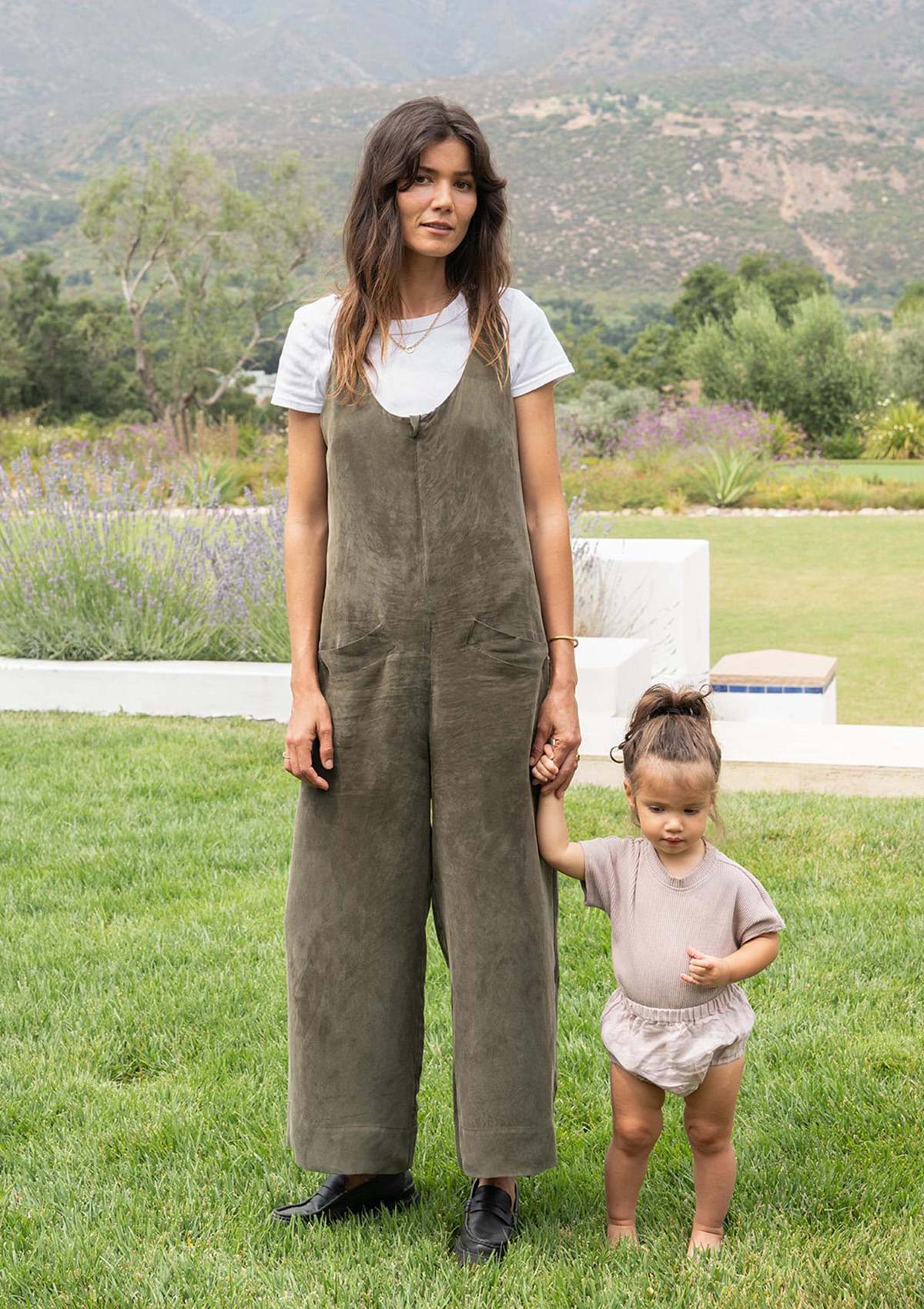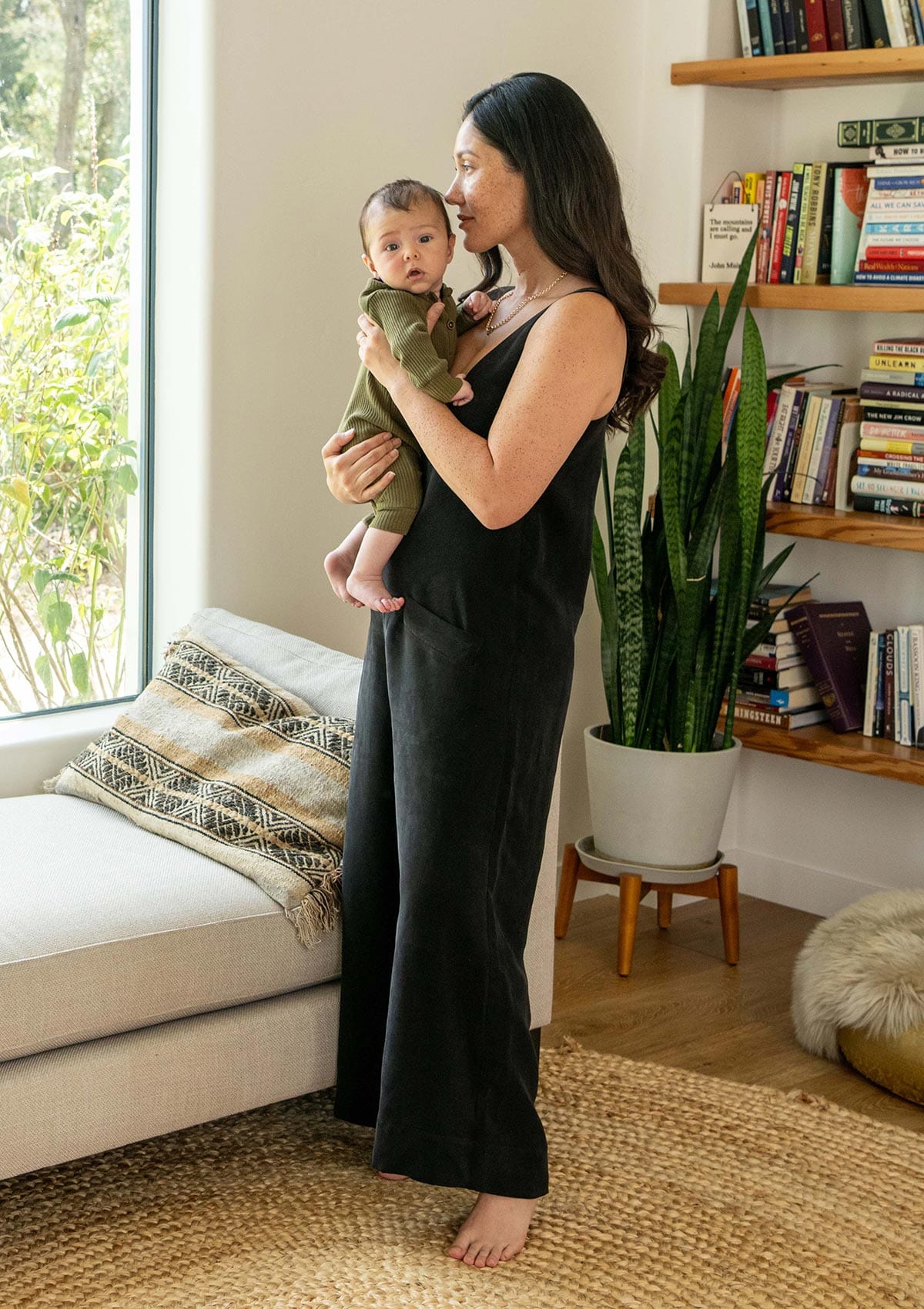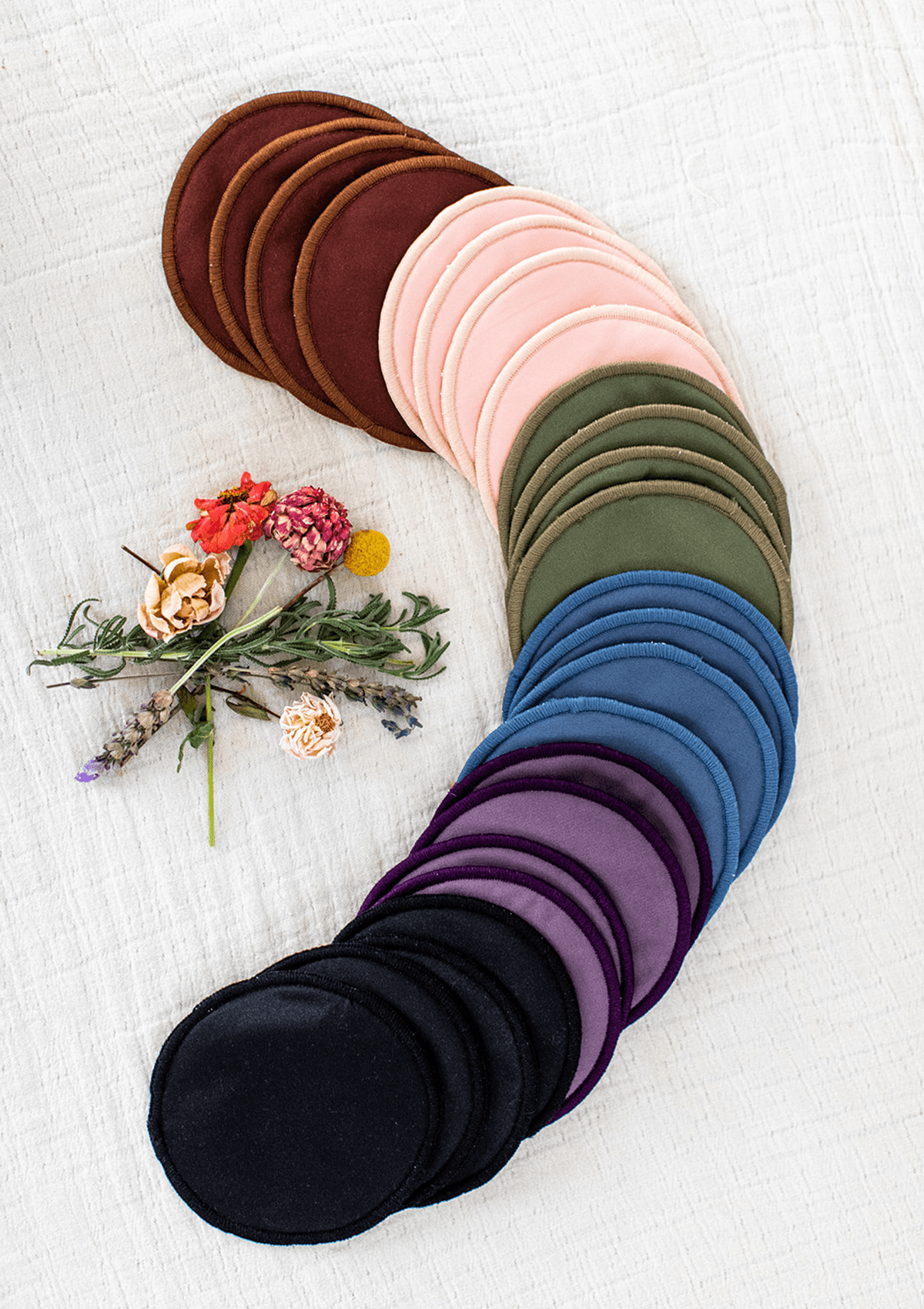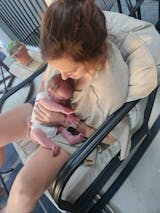
Home or Hospital: How to Choose When It Comes to Giving Birth
Mamahood life is fullllll of decisions...and one of the biggest ones comes before you’ve even met your little bundle of joy: do you want to give birth at home or in a hospital?

In America the majority of births occur in the hospital setting, but there has been a recent uptick in the popularity of home births, so what’s a mama to do?
We’ve outlined the pros and cons of each option to help you make an empowered and informed decision for you and your family.
As always, remember that while all of us at AMMA are brilliant and passionate about all things motherhood, we are none of us medical professionals! So use this as a jumping-off point for your own research and loop your care provider into whatever decision process you go through ;)
Home Birth
Home births are attended by a licensed midwife; very few OBs offer home birth services (note: laws governing midwives’ scope of practice vary state to state...check for the options available in your area). You can also have a doula present to provide labor support, and have a lactation consultant make a house call after birth to help initiate your breastfeeding journey.
Why Birth at Home:
- Holistic and unhurried approach to birth
- Want a familiar and more private location with your family and only chosen support people close by
- Desire as few medical interventions and check-ins as possible
- Plan to use multiple alternative labor support items (birth tub, peanut ball, birthing stool, rebozo, etc).
- Lack of access to a hospital with a dedicated maternity ward
- Limited or no insurance coverage for an in-hospital birth
- Desire to have more freedom, mobility, and control during pregnancy, labor, and delivery
- Religious or cultural beliefs
Why Home Birth Might Not Be For You:
- If you’re relying on your insurance plan to help pay for your birth, home births are not always covered by insurance (or only covered partially) - check with your insurance company.
- If you “risk out,” meaning you have complications or conditions that your provider feels are better managed in hospital, including:
- Carrying multiples
- Breech baby
- Going into labor before 37 weeks or after 41 weeks
- A previous Caesarean (meaning you’d be attempting a VBAC or HBAC)
- Preeclampsia or eclampsia
- Cholestasis
Again, a lot depends on your provider in terms of what they are comfortable with, and your state’s medical laws can be a factor as well.
The American College of Obstetricians and Gynecologists (ACOG), the American College of Nurse-Midwives (ACNM), and the American Academy of Pediatrics (AAP) -- whew, that was a lot of acronyms! -- all state that home birth should only be considered for low-risk pregnancies and be attended by a physician, certified professional midwife, (CPM) or certified nurse-midwife (CNM...there’s another two for ya). They also recommend that mama should live close to a hospital in case of an emergency.
Mama Pro Tip → If your home isn’t an ideal location for whatever reason, but you still want the home birth care model and vibe, consider a birth center...most still follow the style of home births (and a lot of home birth midwives will practice at centers as well as in homes).
Generally speaking, home birth is non-interventive and mother-led, meaning you won’t be induced, receive Pitocin or other uterine stimulants, be hooked up to monitors, receive epidurals or spinal blocks, or be required to push in a specific position or location. You’ll have the freedom to choose your laboring positions, you’ll be allowed to eat and drink as you like, and use other elements like candles or essential oils. After the birth of your baby, your midwife or nurse may return the following day to check on you and babe, administer a heel prick or do any other newborn testing, and make a plan for a postpartum wellness visit.
Home Birth Prep
Home births require a little more advance planning than hospital births, because in addition to wading through state provider rules and figuring out whether you’re a good candidate, you need to get some of your own supplies. Assembling a birth kit is pretty easy, though; just use a checklist to make sure you have everything ahead of time! Some examples of what you may need / want:
- Birthing tub
- Birth ball or stool
- Playlist
- Towels
- Extra set of sheets (that you don't mind getting really dirty!)
- Depends underwear
- Snacks and refillable water bottle
- Large trash bags
- Bowl for placenta (if you plan to encapsulate)
- Isopropyl rubbing alcohol and / or hydrogen peroxide
...and anything else your provider recommends!
Mama Pro Tip → if you plan to use a birth tub, figure out where in your house is the best place to set it up (personal anecdote: I got it into my head that I needed to have a structural engineer in to reinforce our dining room floor before we could use our tub; thankfully my husband talked me down from that one!) and if you can, set it up a couple days ahead of your guess date...you don’t have to fill it right away but it’s one less thing to do while you’re trying to time contractions.
No matter how thoroughly you prepare, it’s still possible you might end up needing to transfer to a hospital at some point during labor and birth (best laid plans and all that). Reasons for a transfer could include:
- Baby is in a difficult position for delivery (shoulder dystocia, breech, etc.)
- Unexplained vaginal bleeding
- Signs of distress from baby during labor or after birth
- Failure to progress in labor
- Mama decides she wants pain relief medication
- Placental complications
- A prolapsed cord
A skilled home birth midwife is trained to manage situations as they arise during childbirth (they bring those big bags of stuff for a reason!), and they should know when a transfer is warranted. For peace of mind, it’s a good idea to pack a hospital bag and type up a hospital-focused birth plan even if you are planning to have baby at home...just in case! A backup plan will reduce unnecessary stress...super important when it comes to birth!
Hospital Birth
By far still the most common way to have a baby in America is in a hospital. You may see the same doctor throughout your entire pregnancy and birth experience, or you may have a team of care providers working with you. In-hospital births can be attended by OB/GYNs or licensed midwives, depending on your specific hospital and the model of care you’re looking for.
Hospital birth may be the way to go for you for any of the following reasons:
- Desired access to pain relief medications during labor
- A high-risk pregnancy
- Carrying multiples
- Baby is breech
- Your own comfort level (stress does no favors to labor progress, so if you would just feel better in a hospital, go for it)
- Planning an induction
If you choose to labor and birth in hospital, keep the following possibilities in mind:
- Cascade of interventions, meaning once you get one medical intervention you may be more likely to receive more (for example, getting induced could mean you’d need Pitocin, which may lead to an epidural, which means a higher likelihood of unplanned belly birth...none of this is inherently bad; it just depends on your personal preferences!)
- Limited or no access to certain labor support measures like a birth tub, birthing stool, etc
- More likely to have certain procedures recommended or “required” (forceps, episiotomies, newborn procedures, etc)
- Exposure to hospital-based infection
There can be huge differences in your care experience depending on your provider, so a hospital birth doesn’t necessarily mean that your birth will be heavily “medicalized,” but you may find that you need to advocate more strongly for your preferences. We also want to stress that ALL births are beautiful, so the use of or lack of interventions does NOT dictate your “success” at birthing your sweet babe...you’re a badass no matter what!
If you’re wanting a more holistic approach to your pregnancy and labor but you aren’t comfortable making (or able to make) the switch to a home birth, consider finding an in-hospital midwife practice to provide your prenatal care. You can also bring items with you to the hospital that help make the environment feel more personal and warm, like a birth banner, LED candles, and your own blankets.
Mama Pro Tip → Don’t be afraid to change providers if you aren’t satisfied with the support you are receiving; sometimes a practitioner swap is all that’s needed to make you feel more informed and empowered about your birth experience!
Hospital Birth Prep
Find out what you’ll be able to do in labor and birth so you can make a birth plan. Can you:
- Labor / push in water?
- Use a peanut ball, birth stool, yoga ball, support bar, etc?
- Labor / push in any position?
- Request intermittent fetal monitoring?
- Eat and drink as desired?
- Request a hep lock if you need an IV?
- Opt for a family-centered belly birth (assuming it’s non-emergent)?
Hiring a doula can be hugely helpful for hospital birth, since they can help you create a birth plan and know what questions to ask your doc. They can also provide alternative forms of pain relief and many doulas are trained in techniques like Spinning Babies, Miles Circuit, and rebozo sifting (all of which can help with pain management and natural labor progression)...having a doula attend your birth is linked with lower rates of interventions and unplanned Cesarean births for a reason!
Above all, the biggest thing to keep in mind with a hospital birth (any birth, really) is INFORMED CONSENT. You have the right to get all the information and ask all the questions of your provider so you can make educated decisions about your care, and you have the right to accept or refuse anything that’s presented to you. Trust and shared decision making can make allllll the difference between feeling like birth is happening TO you and feeling like you are leading your experience (even if things don’t go 100% according to plan)!
No matter where you decide to give birth, you deserve to have a birth story and birth experience that is empowering and beautiful...surround yourself with a support team that’s in your corner every step of the way, and know that you’ve got this!
Good luck, mama!

































